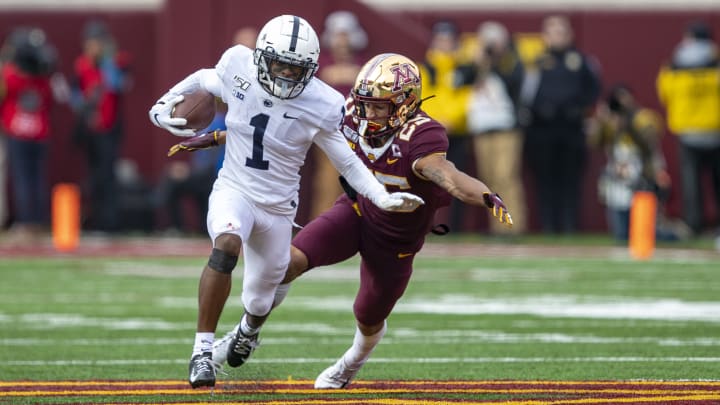SI's Jets Mock Draft 2.0: All Seven Rounds Of The 2020 NFL Draft

Literally nothing has changed since last week for the New York Jets. But that doesn’t mean it isn’t a good time for another mock draft.
Is it ever a bad time for a mock draft?
With the exception of Monday’s College Football Playoff National Championship, the college bowl season is over. And while the NFL playoffs continue on without the Jets, the hope of this team moving forward will be determined in upcoming free agency and April’s NFL Draft.
The Jets need to address offensive line needs in this draft. They also have issues in other areas on this team. Drafting three of four offensive linemen and plugging them in isn’t realistic of prudent.
In this mock draft, the Jets get a starting offensive lineman in the first round, a wide receiver to replace their playmaker and add some depth to both sides of the ball.
And yes, there is a second offensive lineman taken, but later in the draft.
A look at SI’s Jets Mock Draft 2.0:
First Round (No. 11) – Tristan Wirfs (offensive tackle): Arguably the second or third best offensive tackle in the draft, the Iowa standout is an outstanding run blocker and developing in his pass blocking. He’s an instant upgrade for the Jets, who might plug him at right tackle for a season or two before moving him to the other side of the line.
He is physically strong (holds Iowa’s hang clean record) and was named the Big Ten Offensive Lineman of the Year this past season. This is a franchise-building selection.
Second Round (No. 48) – K.J. Hamler (wide receiver): It might seem a bit uncanny for the Jets to go wide receiver in the second round, but this pick works off the assumption that the Jets might not be willing to meet Robby Anderson’s desired contractual demands, rumored to be north of $12 million.
Hamler is fast and elusive, adding a playmaker dimension to the Jets offense. He had good production at Penn State with 904 receiving yards and eight touchdowns in 2019.
Third Round (No. 68) – Jeff Gladney (cornerback): Three times an All Big 12 selection at TCU, Gladney has good size and length to play cornerback. Last season, he had 31 tackles and 14 passes defended playing a pretty good schedule.
Cornerback depth is needed on this team and Gladney projects as a solid addition to the secondary who could likely start sooner rather than later.
Third Round (No. 79) – Alton Robinson (defensive end): The Jets don’t come into the draft necessarily needing an edge rusher. But Robinson’s potential shown last year at Syracuse is just beginning to scratch the surface.
Getting Robinson adds a player to a position of need along the two-deep and Robinson could well grow into a starter someday. He will see plenty of reps as a rookie.
Fifth Round (No. 140) – Ben Bredeson (guard): Not the best athlete, Bredeson is a multi-year starter at Michigan and a tough presence. He simply loves to play physically and adds depth to the Jets a position where bodies were an issue last year.
Not the greatest athlete but good instincts and tough. Nice value pick here who could help with offensive line depth and grow into a larger role.
Sixth Round (No. 171) – Chris Owens (center/guard): Finally, another offensive lineman.
Owens only started one year at Alabama but has played three seasons for one of the best programs in the nation. He can play anywhere along the offensive line although he projects as a center or a guard. Needs time to develop and likely will “redshirt” this season but looks the part of being a starting center down the road.
Seventh Round (No. 202) - Harrison Bryant (tight end): The Florida Atlantic prospect has good size (6-foot-5-inches) and length. Not a great athlete or blocker, this is a pick that the Jets hope to develop over time. Adds depth at tight end and a potential red zone target.
